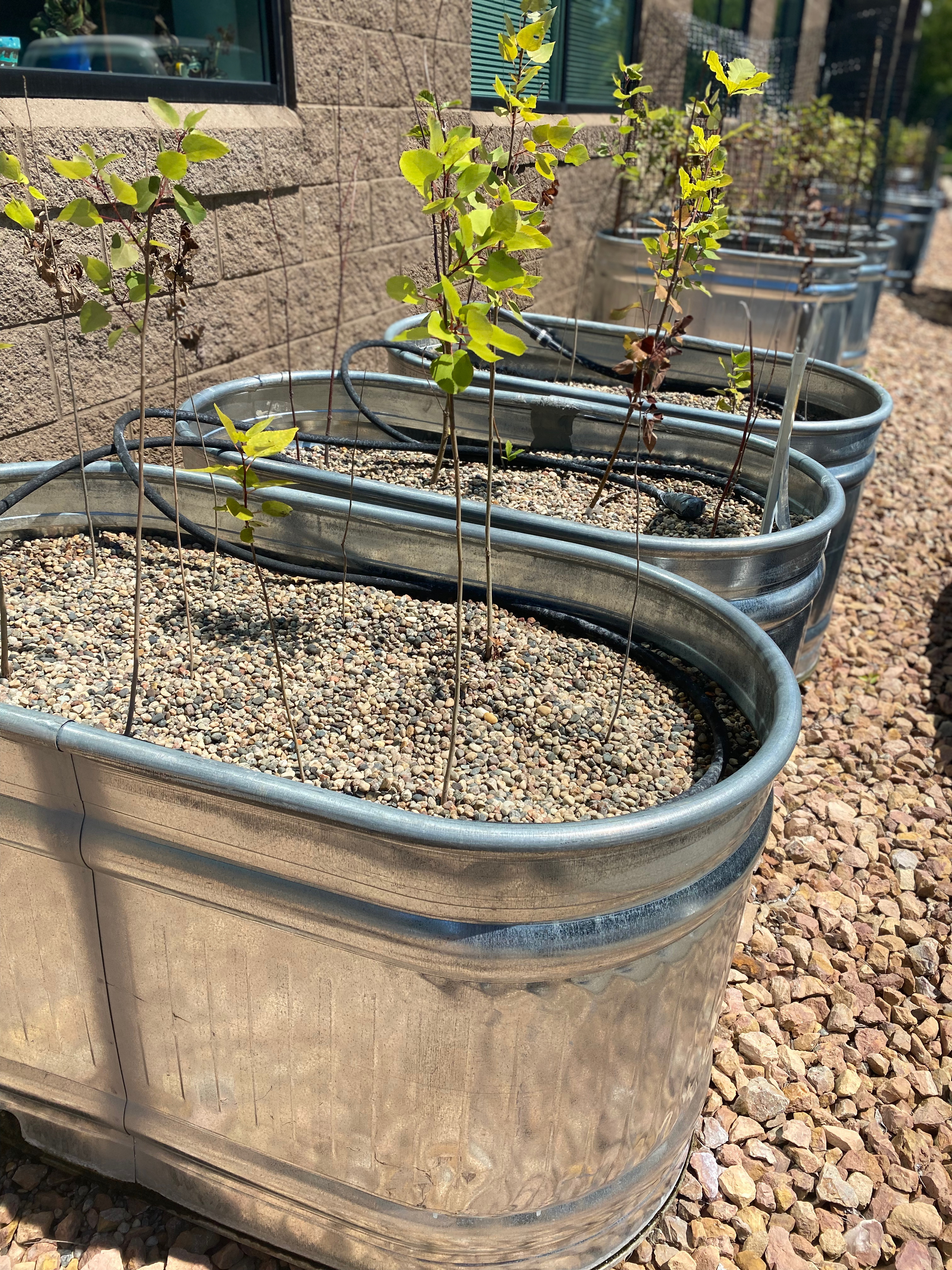Gravel Growers
Every Fall, we give away over 100 tree and shrub saplings that have been growing in the gravel beds outside our office for YOU tp plant! Planting trees on your property provides a full range of ecosystem services, and are an excellent way to minimize stormwater runoff.
What is a Gravel Grower?
Our gravel growers are young trees and shrubs that are being temporarily housed in gravel beds so that their roots can grow dense and hardy. While in a gravel bed, a sapling will grow at it's normal rate above ground, but below ground will form a fibrous root system that will give it an advantage when it's eventually planted in the ground. Our tree and shrub saplings go into our gravel beds in the spring and spend the summer growing their roots before finally moving to to their new home in the yards of members of the community in the fall.
Learn more about gravel beds.
Trees
The Watershed District will provide saplings to residents interested in having them planted on their property. Planting trees on your property provides a full range of ecosystem services, and are an excellent way to minimize stormwater runoff. The leaves of the tree, or canopy, provide surface area for rainwater to land and be absorbed as well as slow down rain as it falls. The roots of a tree not only take in water but also create healthy soil conditions which promote better infiltration. Trees also help control erosion and runoff along our lakes and creeks by using their roots to stabilize slopes and capturing nutrients before they can reach our waterways.
Learn more about the benefit of trees.
Want to take home a sapling?
Fill out the form below to let us know what sapling(s) you'd like to take home (see below for this year's species). Trees are reserved on a first come first serve basis, while quantity will be dictated by demand. We will reach out in September to let you know which and how many trees we can provide you. Pick-up will be at the RPBCWD office in mid-October.
Note: trees are reserved for residents of the Riley Purgatory Bluff Creek Watershed District. See if you live within our bounds.

Our Gravel Growers
Red-Osier Dogwood
A favorite of landscapers and gardeners, the Red-Osier Dogwood is known for its bright red stems which provide of pop of color year-round. A very hardy shrub, it can tolerate clay soils, wet soils, occasional drought, and shade - making it effective erosion control along streambanks. The Red-Osier Dogwood is considered a large shrub, growing quickly to heights of 7-9 feet and spreading slowly outward up to 10 feet.
Learn moreSaskatoon serviceberry
A medium to large shrub with multiple stems that has four-season interest. In the spring, it produces clusters of fragrant white flowers that droop, followed by large bluish-purple berries. In the summer, the leaves are green, but turn yellow to reddish in the fall. The Saskatoon serviceberry typically grows to around 10 feet tall and spread 6–8 feet. It prefers moist, well-drained, acid soil and full sun or partial shade.
Learn moreBur Oak
Bur oak is the most common oak tree in Minnesota, and can grow to heights of 60-80 feet. Bur oaks can be found growing on dry uplands on limestone and gravelly ridges, sandy plains, and loamy slopes. They can also be found growing in moist flood plains of streams. They are tolerant of drought conditions and occasional flooding, and prefer full sun.
Learn moreBalsam Fir
Balsam fir is a popular Christmas tree known for its fresh fragrance and long-lasting needles. It can grow to be 50-70 feet tall and 15-25 feet wide. They prefer full sun to part shade. Balsam fir grows best in moist, cool, well-drained, acidic soil with a pH of 5.5–6.5. It can tolerate some salt, and grows on a wide range of soils, from silt loams to stony loams.
Learn more